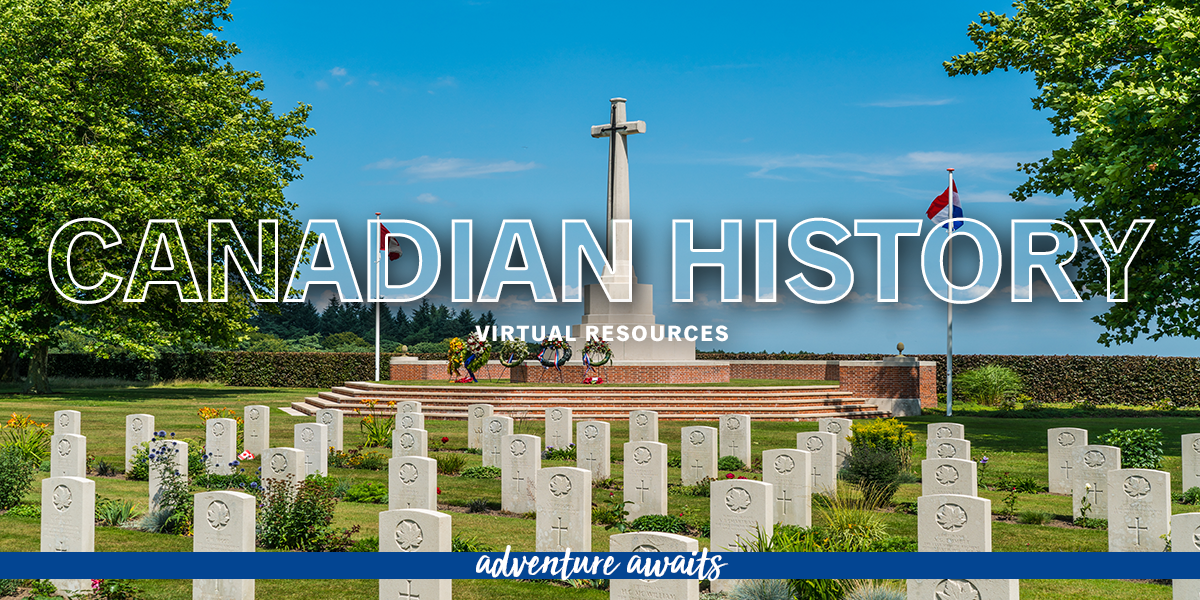Soldier Project
Project Objectives: The goal of this interactive student project is to honour our Canadian veterans who fought bravely—and to commemorate the sacrifice of the men who lost their lives during both the First and Second World War. This project will give students a deeper understanding of what it meant for these men to leave their lives in Canada to fight overseas and how those sacrifices affected the families left behind. Soldier’s experiences will live on through this project. By performing online research, as well as consulting with a local Legion branch, cadet branches, or local historical societies, students will create a short story, biography, documentary film (DVD), song, poem, or other artistic work about the selected soldier.
How to find a soldier: Some students may want to select a family member, while others may want to select someone who lived near them or who shares their last name.
Students can search for their soldier on the Government of Canada’s Virtual War Memorial. The Canadian Virtual War Memorial honours soldiers who died overseas and provides a wealth of primary information for researchers. Students can find their soldier’s service number, age of death, location of birth, and more. Additionally, for some soldiers, the memorial also includes photos and cemetery location information.
Alternatively, if a student is planning to travel to the Battlefields, they’ll want to select a soldier whose gravesite they can visit. Students can search for Canadian soldiers by burial location on the Commonwealth War Graves website.
Students should look for the following information to start their research on one of the above websites:
- Name
- Service number
- Rank
- Regimental Name
- Cemetery location
Researching A Soldier’s Journey:
There are many online and local resources for students to use in order to research their soldier’s journey. Below is a helpful list of sites, print sources, and more to get your students started. Students should research both the solider and the battles they took part in.
The best resource for more information on a soldier is their service files on the Canadian Government’s website.
- First World War Service files can be found here.
- Second World War Service files can be found here.
- More information on how to read service files can be found here.
- The Canadian War Museum offers a comprehensive overview of the battles that Canadians participated in during the First World War.
- The Canadian War Museum also offers over 140,000 searchable newspaper clippings from the Second World War.
- For the Second World War, the Liberation Route offers lots of information on many battles, as well as video Guided Tours on YouTube.
Although the above sites and online documents are great resources, some of the best information may come from school or a local library. We strongly recommend talking to a librarian, who can help direct students towards print resources about the First and Second World War. We also recommend researching work by Canadian Historians like Tim Cook, Mark Zuehlke, and Jack Granatstein.
After the Research: Completing a Tribute
The first rule for completing a tribute is quite simple: be creative.
Write a short story, a narrative biography, create a documentary film (DVD), write a song—no matter what form a tribute takes, make it creative and meaningful.
Although the only real rule is to be creative, here are some other guidelines to get started:
Short stories, biographies, or poems: 600 words or less
Artwork: 8½ x 11 size limit
Songs, films, and other digital media: 3 minutes or less
If students are travelling overseas, please laminate their projects and leave them on their soldier’s grave. This allows future visitors to learn more about the men buried there.
If students selected a solider in Groesbeek Cemetery in the Netherlands, we encourage students to submit their projects to Faces to Graves, an organization that is hoping to find more information on every person buried in that cemetery.

